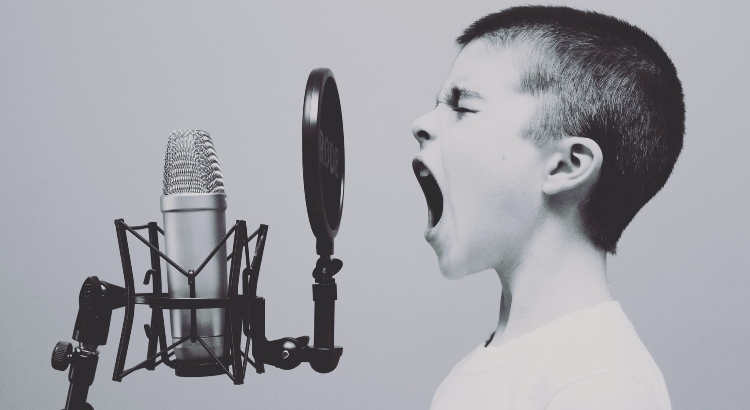Why Sound Quality Matters for Transcription and Content
Sound quality can make or break your audio or video project. Even a stunning video with an engaging story can lose viewers if the sound is poor. Listeners may find it hard to focus or even leave your content if they struggle to hear the message.
- Professional audio builds trust and credibility.
- Poor-quality sound turns off audiences, making even the best visuals less appealing.
- Clear audio improves the results of transcription services and ensures accurate quotes for research, SEO, and more.
Sound Quality Is Essential Everywhere
Good audio is not just for YouTube videos—it's vital for:
- Podcasts
- Interviews
- Webinars and workshops
- Meetings and conferences
- Learning materials
If content will be shared publicly or used repeatedly, crystal-clear sound creates a positive experience and helps you stand out.
How Good Sound Quality Supports Transcription Accuracy
Clear recordings lead to better transcriptions. When audio is crisp, transcribers work faster and deliver more accurate results. This is important for:
- Research projects needing exact quotes
- SEO strategies using written content from spoken material
- Legal or medical documentation
Studies show that poor audio increases transcription errors by up to 40% (Study.com, 2021). Clean sound saves time, reduces costs, and ensures the final text matches what was said.
Tips to Ensure Crisp, Transcription-Ready Audio
Create a flawless listening and transcription experience with these expert tips:
1. Check Your Recording Environment
- Choose an indoor, quiet location over outdoor spaces when possible.
- Avoid areas with background noises like traffic, wind, or noisy equipment.
- Keep the number of people in the room to a minimum to prevent disruptions or accidental sounds.
- Turn off devices that could interrupt, such as cell phones or alarms.
Background noise can ruin even the best story or interview. If you must record outside, consider using windshields and noise-canceling equipment.
2. Use Quality Equipment
- Invest in reliable microphones designed for speech.
- Consider external recorders for extra clarity.
- Use updated recording software to minimize technical glitches.
- Test your setup before important sessions to spot problems early.
While some get by with basic mics in quiet rooms, professional gear ensures clear, consistent audio every time.
3. Keep Microphones Close to Every Speaker
- Place microphones less than a foot from each speaker’s mouth for the best sound.
- If possible, assign each participant their own microphone. This captures clear, balanced voices.
- If sharing or using a single recording device, arrange seating for equal distances from the mic.
- During events like the COVID-19 pandemic, maintain safe distances while keeping microphones nearby.
Individual microphones help capture each voice clearly and reduce crosstalk or background noise.
4. Prepare Thoroughly Before Recording
- Get familiar with all equipment before the session.
- Have a list of topics or questions ready to keep the conversation on track.
- Test your setup and do a short sample recording to review the sound quality.
- Communicate with guests about speaking clearly and avoiding interrupting.
Preparation reduces unexpected noises and technical issues. It also builds your confidence, helping you deliver a smoother recording. Clear voices lead to easier, more accurate transcriptions.
Extra Tips for Cleaner Audio and Better Transcripts
- Encourage speakers to avoid talking over each other.
- Use pop filters to reduce microphone pops and hisses.
- Keep drinks, snacks, and other distractions away from the recording area.
- Label speakers if possible, especially for interviews or group settings.
Small steps like these make a big difference when you need high-quality transcripts for research, subtitles, and more.
Leverage Professional Transcription for Best Results
Once your audio is ready, a professional transcription service completes the process. Experts can catch hard-to-hear phrases and add the proper formatting for SEO or accessibility.
- Consider using automated transcription for quick drafts or AI transcription subscription for ongoing needs.
- Transcription proofreading ensures 99% accuracy, even from complex recordings.
- Affordable pricing makes quality transcripts accessible for any project.
- Order a transcript in moments with GoTranscript’s simple upload system.
Conclusion: Choose GoTranscript for Reliable Transcription Solutions
Great sound quality is essential for every recording. It helps you engage your audience and guarantees your message is heard and transcribed correctly. With these tips, your audio will be ready for high-accuracy transcripts.
If you need help, GoTranscript offers a full range of solutions, including human and automated transcription, closed captioning, subtitling, and translation services. Trust GoTranscript for affordable, precise results on every project.




 English
English
 Español
Español
 Português
Português
 Svenska
Svenska
 Français
Français














 Verified Order
Verified Order